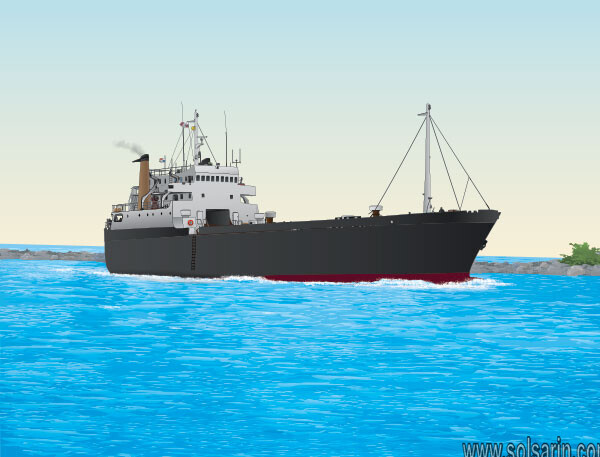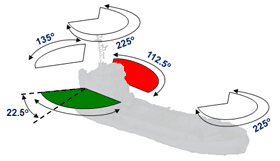
(h) The term “vessel constrained by her draft” means a power driven vessel which because of her draft in relation to the available depth and width of navigable water is severely restricted in her ability to deviate from the course she is following. (vi) A vessel engaged in a towing operation such as severely restricts the towing vessel and her tow in their ability to deviate from their course. (v) A vessel engaged in mineclearance operations (iv) A vessel engaged in the launching or recovery of aircraft (iii) A vessel engaged in replenishment or transferring persons, provisions or cargo while underway (ii) A vessel engaged in dredging, surveying or underwater operations (i) A vessel engaged in laying, servicing, or picking up a navigational mark, submarine cable or pipeline The term “vessel restricted in her ability to maneuver” shall include but not be limited to: (g) The term “vessel restricted in her ability to maneuver” means a vessel which from the nature of her work is restricted in her ability to maneuver as required by these Rules and is therefore unable to keep out of the way of another vessel. (f) The term “vessel not under command” means a vessel which through some exceptional circumstance is unable to maneuver as required by these Rules and is therefore unable to keep out of the way of another vessel. (e) The term “seaplane” includes any aircraft designed to maneuver on the water. (d) The term “vessel engaged in fishing” means any vessel fishing with nets, lines, trawls, or other fishing apparatus which restrict maneuverability, but does not include a vessel fishing with trolling lines or other fishing apparatus which do not restrict manageability. (c) The term “sailing vessel” means any vessel under sail provided that propelling machinery, if fitted, is not being used. (b) The term “power driven vessel” means any vessel propelled by machinery. (a) The word “vessel” includes every description of watercraft, including non-displacement craft and seaplanes, used or capable of being used as a means of transportation on water.

(b) In construing and complying with these Rules due regard shall be had to all dangers of navigation and collision and to any special circumstances, including the limitations of the vessels involved, which may make a departure from these Rules necessary to avoid immediate danger.įor the purpose of these Rules, except where the context otherwise requires:

(a) Nothing in these Rules shall exonerate any vessel, or the owner, master, or crew thereof, from the consequences of any neglect to comply with these Rules or of the neglect of any precaution which may be required by the ordinary practice of seamen, or by the special circumstances of the case. (e) Whenever the Government concerned shall have determined that a vessel of special construction or purpose cannot comply fully with the provisions of any of these Rules with respect to number, position, range or arc of visibility of lights or shapes, as well as to the disposition and characteristics of sound-signaling appliances, such vessel shall comply with such other provisions in regard to number, position, range or arc of visibility of lights or shapes, as well as to the disposition and characteristics of sound-signaling appliances, as her Government shall have determined to be the closest possible compliance with these Rules in respect to that vessel. (d) Traffic separation schemes may be adopted by the Organization for the purpose of these Rules. These additional station or signal lights or whistle signals shall, so far as possible, be such that they cannot be mistaken for any light, shape, or signal authorized elsewhere under these Rules. (c) Nothing in these Rules shall interfere with the operation of any special rules made by the Government of any State with respect to additional station or signal lights or shapes or whistle signals for ships of war and vessels proceeding under convoy, or with respect to additional station or signal lights for fishing vessels fishing as a fleet.

Such special rules shall conform as closely as possible to these Rules. (b) Nothing in these Rules shall interfere in the operation of special rules made by an appropriate authority for roadsteads, harbors, rivers, lakes or inland waterways connected with the high seas and navigable by seagoing vessels. (a) These Rules shall apply to all vessels upon the high seas and in all waters connected therewith navigable by seagoing vessels.


 0 kommentar(er)
0 kommentar(er)
